Houseplants have exploded in popularity and have a prominent place in home decor. This beginner guide to houseplant care will help you keep your plants thriving.
In the last 5 years houseplants have found their way back into many homes. What started as a simple home decor trend with plastic plants, has now blossomed into full blown plant keeping.
Social media has tremendously helped boost the popularity of plants. You can find tons of wonderful care tips and information in the plant Instagram world, and the TikTok plant accounts.
Houseplants have become a less daunting and scary undertaking with the abundance of information out there. We love watching new people fall in love with plants.
This beginner guide should help you get a good handle on caring for your new plant baby.
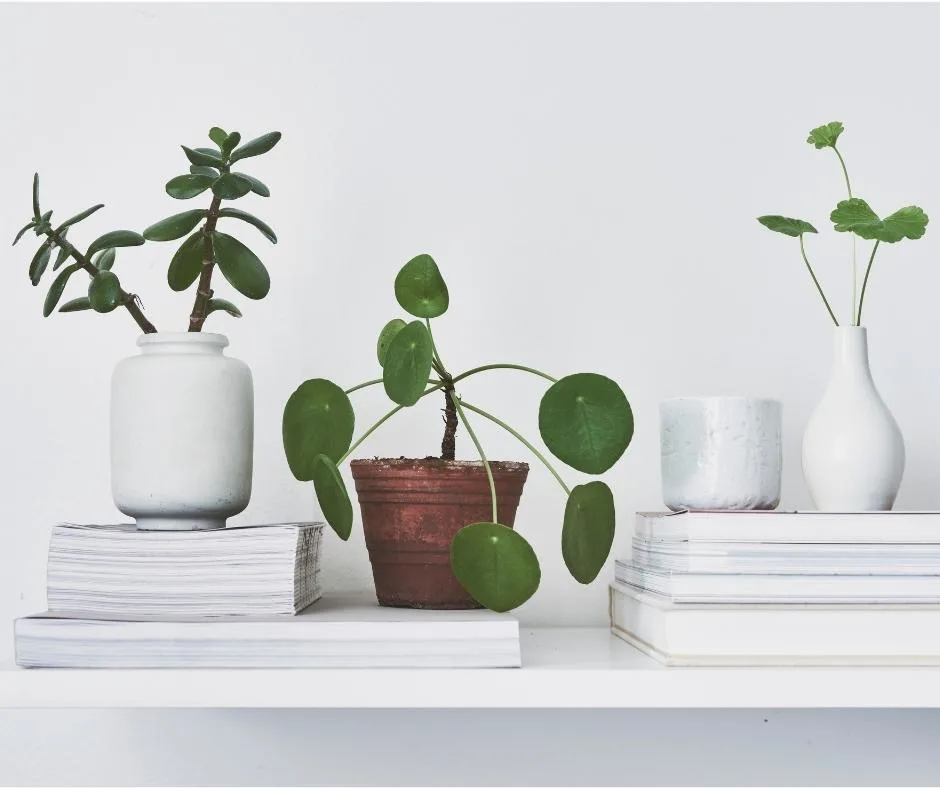
Choosing a new houseplant
Picking out your first plant can be an overwhelming task. There are so many attractive and beautiful houseplants out there. However, not all plants are created equal and some are extremely finicky. I have a few “go to” plants that I always recommend for new plant parents
Most Pothos or Philodendron plants are going to be fairly easy to care for and make great beginner plants. We have a post that has some great options in it for beginner houseplants. If you have the opportunity to do research before going plant shopping, I highly recommend it.
Get an idea for what plants you would like (trailing, climbing, bushy etc). It’s a good idea to have a feel for the lighting in your home. You will need to know what windows have the best morning and afternoon light. Make sure you have an area that is large enough for a mature plant.
Most nursery plants will come in small immature form. They are usually planted in a 4 or 6 inch pot. Almost all houseplants will outgrow these spots and become quite a bit larger when they mature.
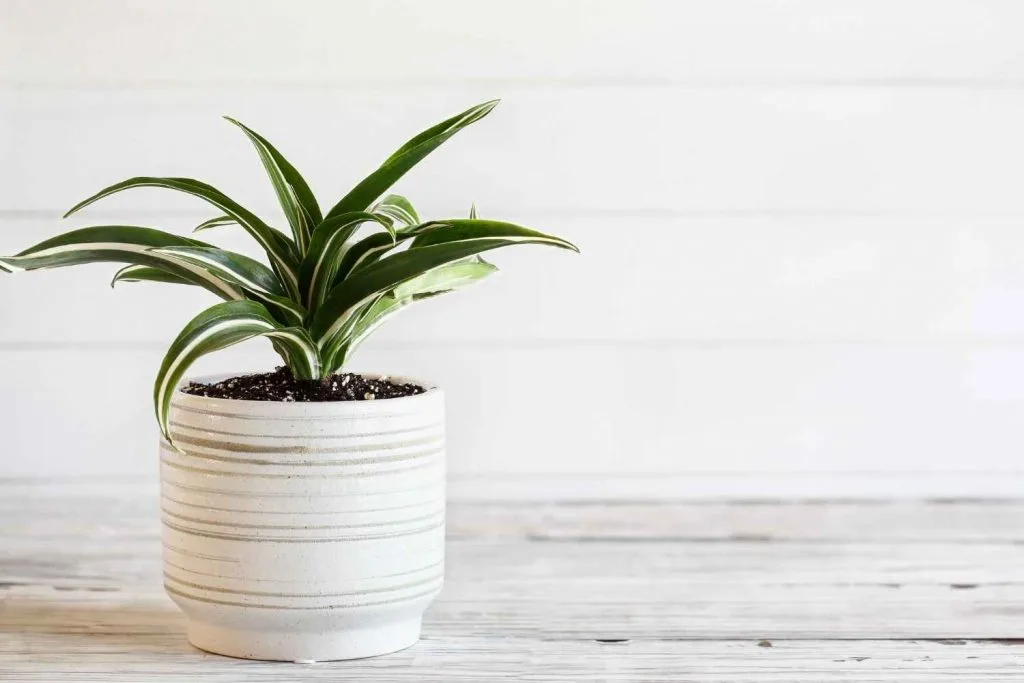
Quarantine your new plant
If you have any other houseplants at all, you will need to quarantine your new plant away from the rest. Any place that sells plants, no matter how big or small will have some amount of pests. Houseplants and pests go together, whether we like it or not.
Always check your plant over before purchasing. Lift the leaves and ensure you do not see any small pests (some of them are almost microscopic in size). Make sure you don’t see signs of pest damage. This can look like tiny damage spots on the leaves, or large yellowing areas.
Most plants will have some amount of damage from shipping or being jostled around at the nursery. However, if it appears there is a pest invasion on that plant, do yourself a favor and put that one down.
I like to give all my new plants a wash with some neem oil to remove any unwanted hitchhikers. Even if the plant appears healthy, it’s easy to unknowingly bring pests home.
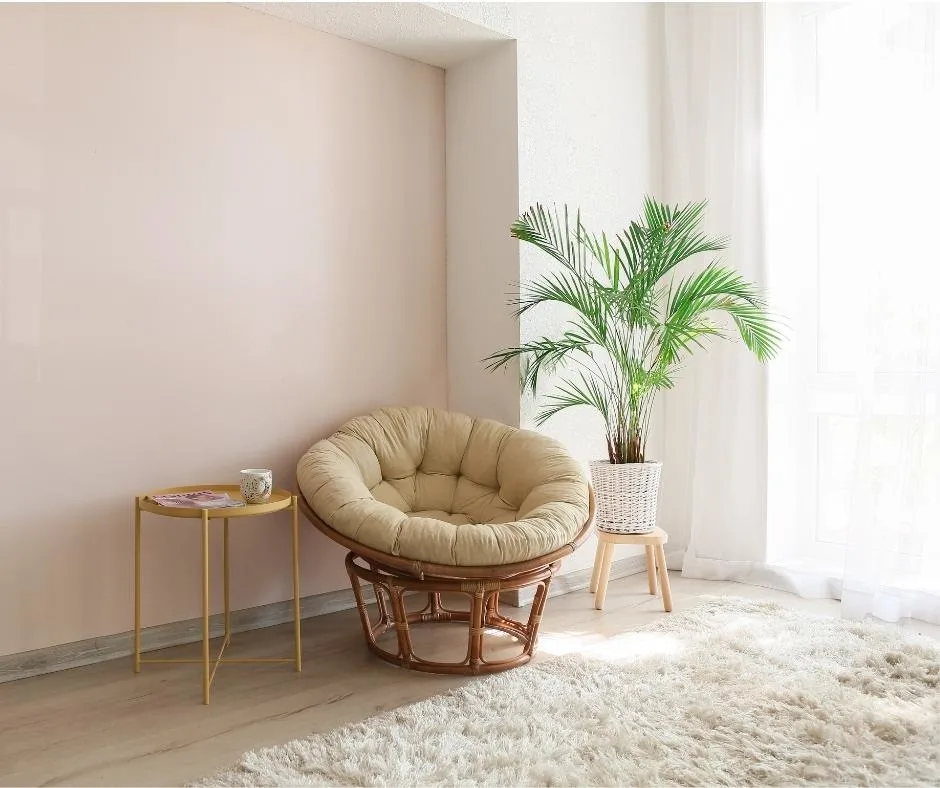
HousePlant Care Tips:
Choosing the right spot for your plant:
Finding the right place to put your plant can be a challenge. You will need to consider a few things before deciding on a forever place your plant. Ensure that whatever spot you choose, it will accommodate the mature size of the houseplant.
Lighting is one of the most important factors in keeping a healthy and thriving plant. You should know the lighting needs of your plant before placing it somewhere. There are low light plants, and plants that require many hours of bright indirect light.
You should know which window has the best lighting at certain times of the day. for a lower light plant, a north facing window works great. For a plant that needs lots of bright indirect light, south or west facing windows work great. Just make sure your plant isn’t sitting in hot direct sunlight for extended periods of time. Most plants will get sunburnt leaves when left in bright direct light.
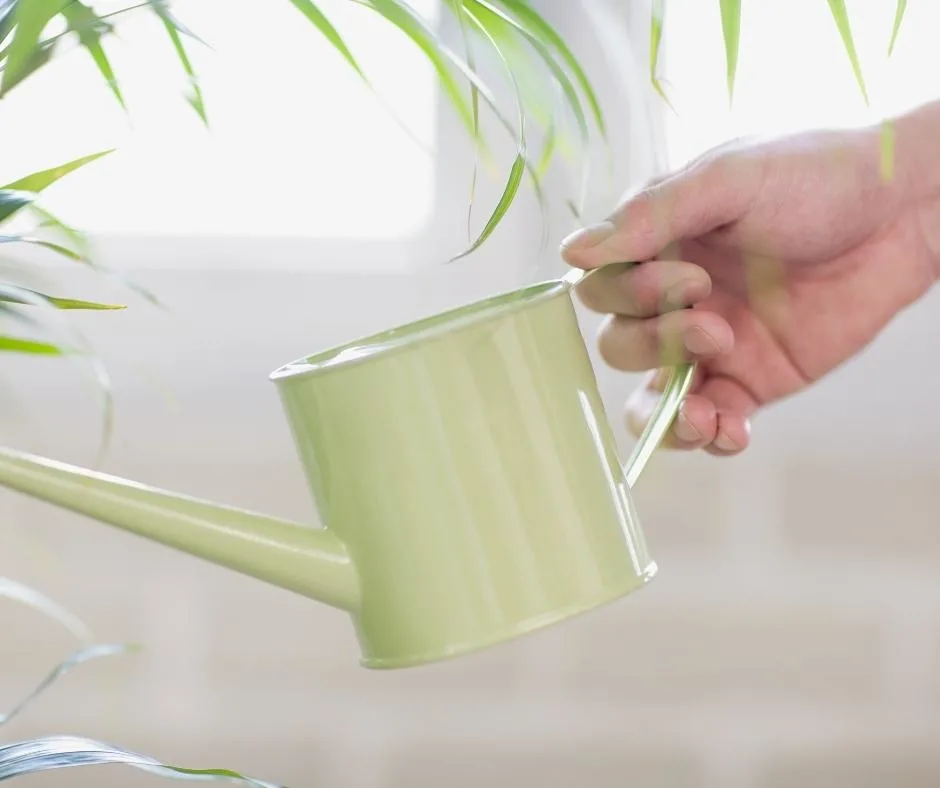
How to water your houseplant:
Watering your plant correctly is arguably the most important thing you will ever do in plant care. The vast majority of houseplants are killed with kindness (overwatering). Many people assume that you water houseplants the same way you water outdoor container flowers in the summer. Most houseplants can go extended periods of time without water.
In nature your plant would need to sit and wait for it to rain. Our goal is to mimic nature as close as possible when caring for our plants. Watering a little bit at a time and often (multiple times a week) will put your plant at great risk for root rot.
The best practice is to first know how much water your plant likes (a succulent has very different watering needs than a fiddle leaf fig). Some plants like to dry out completely. A snake plant can go well over a month with no water. And some houseplants like to keep evenly moist soil. researching your plants watering needs is very important.
I like to water mine every 2-3 weeks. I almost always bottom water my plants, this allows them to soak up as much water as they need. To do this simply place your plant in a bowl of water. The plant will absorb water up through the drainage hole. I leave mine in the bowl of water for 10-15 minutes.
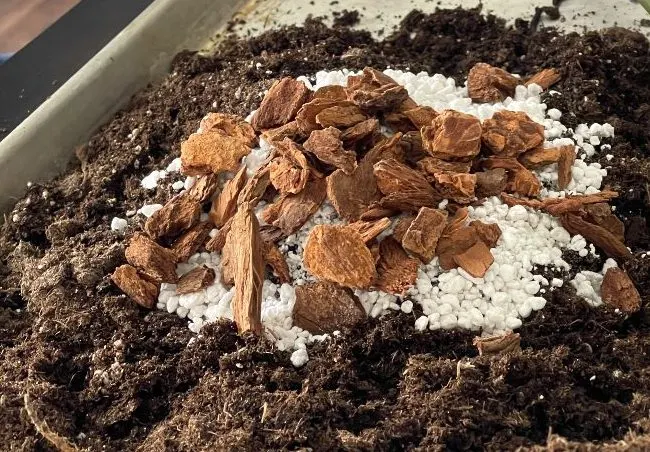
Choosing a proper soil mix for your houseplant:
The proper potting medium is essential for a happy and thriving houseplant. The soil needs will differ between different kinds of houseplants. Most of my aroids (monsteras, philodendrons, pothos etc.) I keep in the same medium. I like to use potting mix, extra perlite, and orchid bark.
Succulents however will require a different mix. Since they like to have dryer roots, a quick draining and light medium works best. Most people use a mix with potting mix, sand, and extra perlite.
Always do your research on the proper potting mix for your plant. This can also help the plant survive uneven watering schedules and other periods of stress.
Do I need to repot my new houseplant?
This is a controversial topic. However, there are a few things to look for that can help you make that decision. Check the root growth out on the bottom of the pot. If there are lots of roots growing and circling outside the bottom of the pot, it is probably root bound and could use a repot.
There are a few pros and cons involved with repotting a new plant. One of the pros is getting a chance to look at the root health. Some growing operations will start plants in a mesh plug. If left on, your plant roots can get stunted and die. Always check the roots if you are repotting.
Read our Posts on Signs That It’s Time To Repot and follow our Guide to Repotting houseplants for a complete, detailed run through of repotting plants, even making your own soil mix.
Another pro Tip is repotting your plant into fresh, clean potting medium. Sometimes fungus or bacteria can live in old potting soil. Many people choose to repot so they know the plant is in safe and fresh new potting medium.
A huge con is stress, your plant has already been through quite a bit of stress just getting to the plant shop. Repotting causes a huge amount of stress on a plant. You also need to ensure that the new pot is the right size for your plant. If you pick a pot that is too large, your plant is at a higher risk for root rot.
If you do end up repotting your plant, make sure that the new pot has a drainage hole. Always choose a pot that is only an inch or two larger than the previous pot.
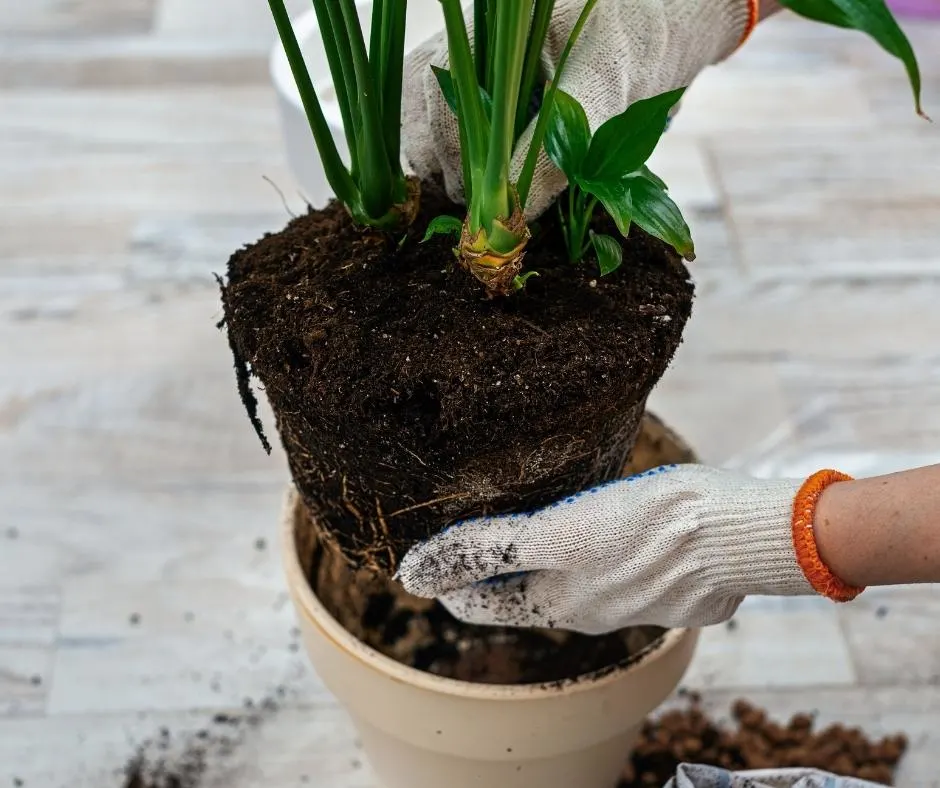
Long term care tips for your new plant
Once you have the basics care needs for your plant covered. There are just a few more tips and tricks to keep your plant in tip top shape.
Fertilizing is important for plant growth. Most potting mix will come with nutrients already in it. However, as the plant sits in the potting mix, it will break down and deplete those nutrients over time. A good practice is to fertilize your plant every 6 weeks or so. Make sure you follow the directions carefully when you fertilize. You can accidentally burn the roots if you overdo it.
Pruning can be necessary depending on the plant. Some tabletop plants that grow in a bush pattern can become leggy over time. If your plant is becoming leggy or too long, go ahead and prune it using sharp sterile scissors.
Propagating plants is a great way to multiply your houseplants, or create new plants to share with friends. Most plants can be propagated in water. Just look for the node (usually located where the leaf joint is) cut below the node and place in water. Since the needs vary by plant, make sure you look up propagation needs for your specific plant.
Dusting your leaves is very important. I like to dust mine every 2 weeks or so when I water them. Dusting can remove pests from the leaves and discourage them from making your plant their home. Removing dust from the leaves helps open the plant spores (the stomata) it also helps the plant photosynthesize more effectively.
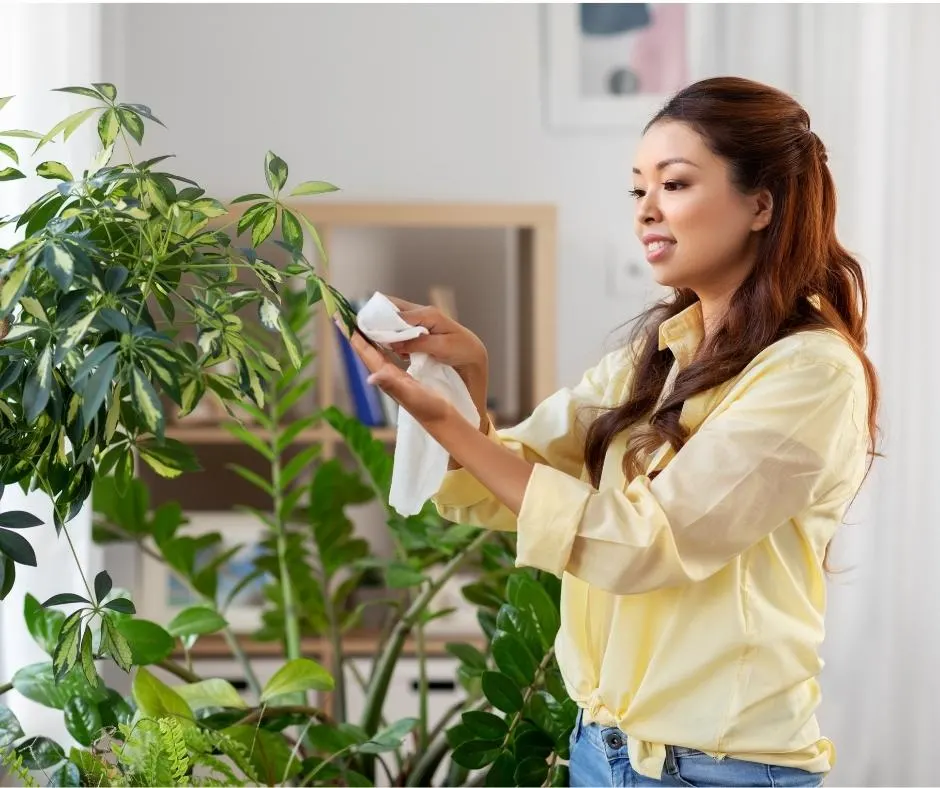
My final piece of advice for houseplant care is to do research on your specific plant. Know what climate your plant comes from. Find out the watering needs for your plant. Ensure you have the proper soil mix, and what kind of lighting your plant will do best in. We have printable care guides on our website for lots of different houseplants.
If you are having a difficulty with your plant (yellowing leaves) or your plant seems like it isn’t thriving, let us know! We would love to try and trouble shoot your plant problems with you.
Helpful Equipment for Beginners:
Follow Us:
Find us on YouTube, Instagram , Pinterest and TikTok! We love to Plant chat. We also comment, like and occasionally share your content to our daily stories. We’d love to see your plants. Share your joy in your houseplants. Happy Planting!
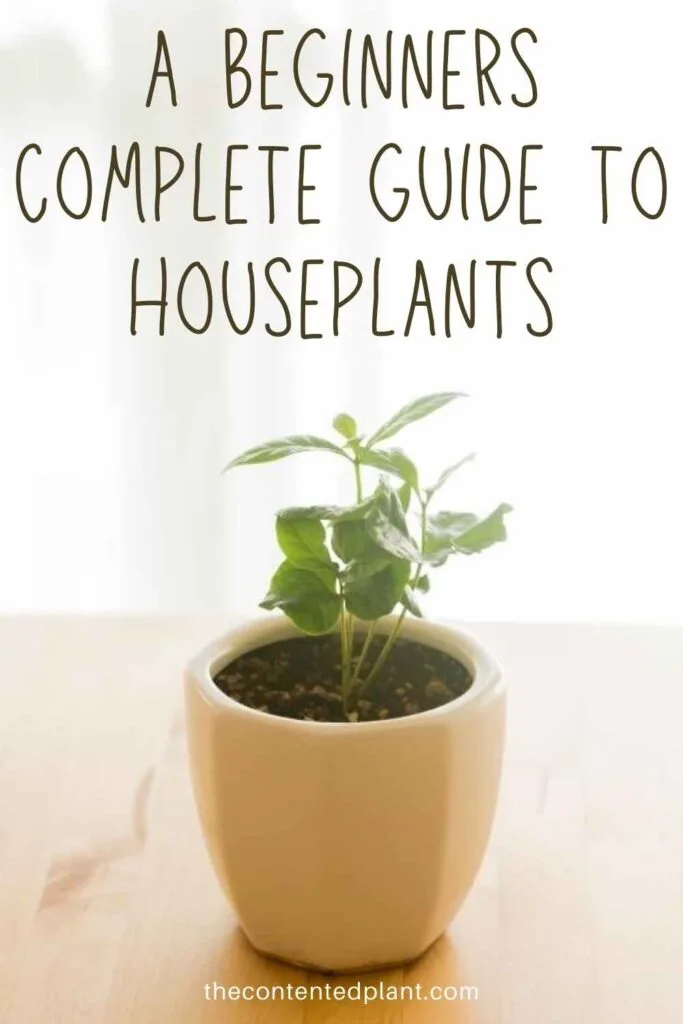

Snake Plant Propagation - The Contented Plant
Saturday 12th of February 2022
[…] Mix for Snake Plants Snake Plant watering guide 7 common plant pests hydrogen peroxide for plants beginner plants You will Love A Guide To fertilizing […]
Best plants for beginner plant parents - The Contented Plant
Tuesday 4th of January 2022
[…] have a list of beginner plants that I work from when I’m giving plants to my friends that are curious about the world of […]